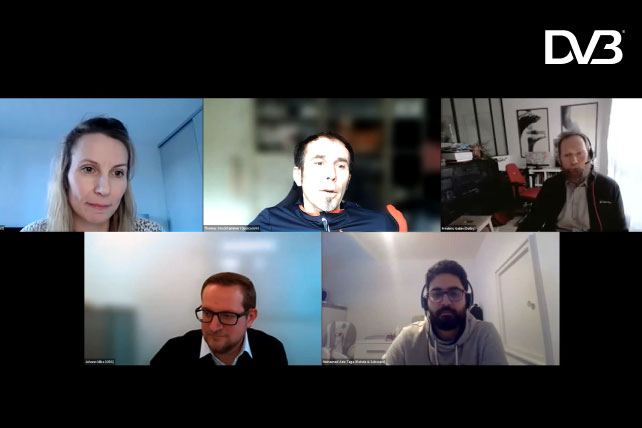
Webinar confirms that 5G Broadcast is on track
This week’s DVB webinar on TV over 5G provided a comprehensive overview of the status of the technical standards, the validation of implementation aspects, and ongoing pre-commercial trials. The video is available to view on demand and slides can be downloaded here.
The overall message was that most of the elements are now in place, with the main uncertainty relating to the availability of handsets. Mohamed Aziz Taga pointed to ongoing collaboration between his company, Rohde & Schwarz, and Qualcomm, to deliver a proof of concept (PoC) over the coming year. It will show that the main functionalities of 5G Broadcast can be translated from a written specification to a reality, including prototype smartphones powered with Qualcomm’s Snapdragon chipsets. It is planned to showcase the PoC in selected regions and countries to test market readiness.
DVB-I with 5G
Qualcomm’s Thomas Stockhammer explained how DVB-I comes into play for adding a TV service layer on top of the 5G-based media distribution platform. The recently published commercial requirements for this set out how DVB-I headends and clients can operate in combination with 5G via well-defined APIs (application protocol interfaces). In practice, it means broadcasters and other content providers can target the full range of receivers, from smartphones to fixed TV sets, with a unified and consistent list of services.
Frédéric Gabin (Dolby), who is leading the technical work on DVB-I over 5G within the DVB Project, introduced the newly launched Joint Task Force between DVB and 5G-MAG. He said that the aim is to quickly produce deployment guidelines and a reference deployment architecture. For him, the goals of applying DVB-I in this way are to increase the reach to user devices by leveraging 5G unicast and broadcast technologies, to enable the distribution of new immersive formats, and to enable the distribution of legal and trusted services.
Johann Mika (ORS) highlighted the importance of direct exchange between standardization leaders and software developers and users. To enable this, he is leading an activity within 5G-MAG to develop a set of open-source reference tools. The new Joint Task Force with DVB will provide a means to feed DVB-I-related requirements into that work.
Introducing the webinar, DVB’s Head of Technology, Emily Dubs, explained that three of DVB’s core internet-centric specifications – DVB-I, DVB-DASH and DVB-MABR – are set to be updated over the course of 2022 to allow for 5G-based delivery.
—
The slides are available to download here
—
